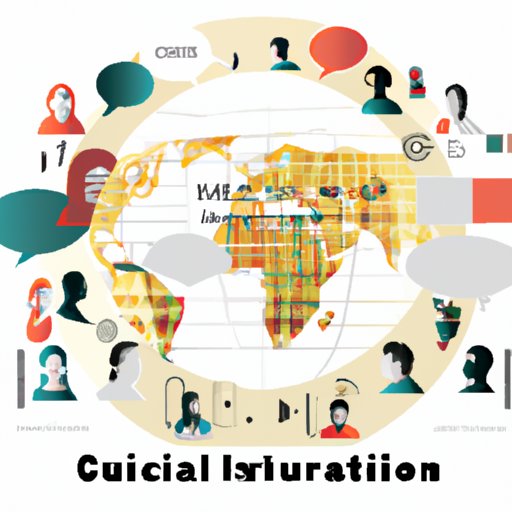Introduction
Cultural integration is the process of combining different cultures, ideologies, and values into a unified whole. Cultural integration can occur through the sharing of customs, beliefs, and practices among different cultures. It can also be seen as an exchange of ideas, values, and traditions that are shared between two or more cultures. Cultural integration is a complex process that involves both the mixing of different cultures as well as the preservation of individual cultural identities.
The benefits of cultural integration include increased understanding and appreciation of different cultures, improved communication, and enhanced economic development. However, there are also some potential challenges associated with cultural integration, such as the loss of traditional values and the risk of cultural homogenization. In order to understand the implications of cultural integration, it is important to examine its history, its impact on society, and the role of government in facilitating it.
Historical Examples of Cultural Integration
In order to fully understand the implications of cultural integration, it is important to look at how it has developed throughout history. Globalization has played an important role in the process of cultural integration. The increased interconnectedness of the world has allowed for the spread of culture, ideas, and values around the globe. This has resulted in the emergence of new cultures and the blending of existing ones. Immigration has also contributed to cultural integration as people move to different countries and bring their own customs and beliefs with them. Colonization has also been a major factor in the process of cultural integration, as colonizers have often imposed their own values and beliefs on the native populations.
Understanding How Cultural Integration Impacts Society
Cultural integration has had a significant impact on society. On an interpersonal level, cultural integration can lead to increased understanding and appreciation of different cultures. People from different backgrounds can learn about each other’s cultures and develop mutual respect. This can help to reduce prejudice and discrimination. On an economic level, cultural integration can lead to increased economic growth and development as different cultures come together to create new products and services. This can also lead to an increase in trade and investment between different countries.
Cultural integration can also have a negative impact on society. For example, the imposition of foreign values and beliefs can lead to a loss of traditional values and the erasure of certain cultural identities. This can lead to a feeling of alienation among members of minority cultures. Additionally, the risk of cultural homogenization exists, where one dominant culture begins to dominate over other cultures. This can lead to a loss of cultural diversity and stifle creativity and innovation.

The Role of Government in Facilitating Cultural Integration
Governments play an important role in promoting cultural integration. Governments can implement policies that encourage the sharing of cultures, such as visa programs and multicultural education initiatives. Governments can also provide resources to support immigrants and refugees, such as language classes and job training programs. Additionally, governments can provide incentives to businesses to promote diversity in the workplace. These measures can help to promote cultural integration and foster a sense of unity within a nation.

The Impact of Technology on Cultural Integration
Technology has played an important role in facilitating cultural integration. Social media platforms have enabled people from different cultures to connect and share ideas. This has helped to break down barriers and allowed for a greater exchange of culture and values. Additionally, technology has made it easier for people to travel and interact with people from different backgrounds. This has further facilitated the process of cultural integration.

The Future of Cultural Integration
The future of cultural integration is uncertain. It is likely that the process of cultural integration will continue, as people become increasingly connected and exposed to different cultures. However, there are potential implications of this process. For example, there is a risk of cultural homogenization, where one dominant culture begins to dominate over other cultures. Additionally, the preservation of individual cultural identities could be threatened. In order to ensure a positive future for cultural integration, it is important to focus on solutions that promote acceptance and understanding between different cultures.
Conclusion
Cultural integration is an important process that has significant implications for society. Through the examination of its history, its impact on society, and the role of government in promoting it, we can gain a better understanding of the benefits and challenges associated with cultural integration. Additionally, the impact of technology on cultural integration cannot be ignored. As we look towards the future, it is important to find solutions that promote acceptance and understanding between different cultures. Only then can we ensure a positive future for cultural integration.
(Note: Is this article not meeting your expectations? Do you have knowledge or insights to share? Unlock new opportunities and expand your reach by joining our authors team. Click Registration to join us and share your expertise with our readers.)
